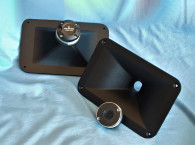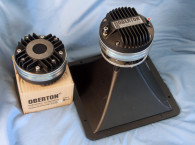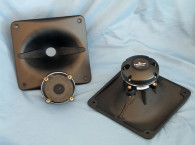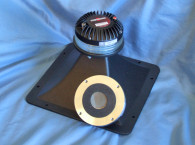
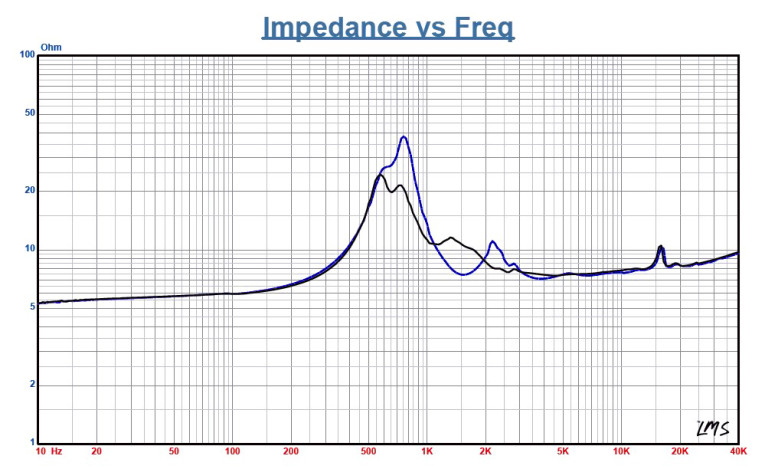

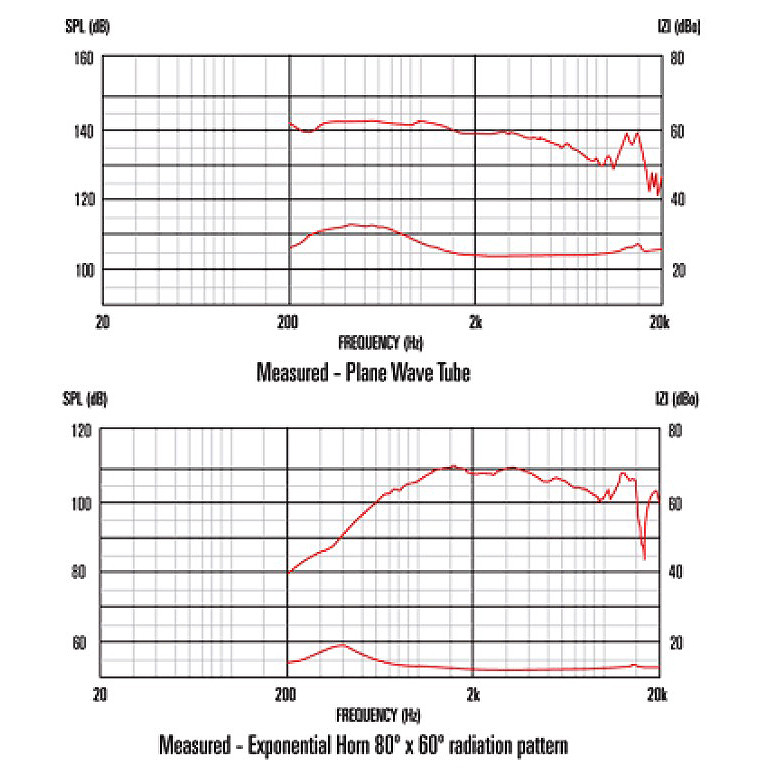
Designed for use with 1.4” throat horns, the CDX14-2420 has a 35.6 mm (1.4”) throat diameter driven by a 60 mm (2.4”) diameter voice coil wound with edgewound copper-clad aluminum wire (CCAW) on a high-temperature fiberglass non-conducting former, which drives a deep-drawn titanium diaphragm and polyimide surround.
Other features include a FEA-optimized neodymium magnet motor structure, a continuous power handling of 140 W (3 dB greater than the 70 W AES rating), a 1.2 kHz recommended crossover frequency, and 1 W/1 m 106.5 dB sensitivity (measured 2 π on a typical horn). Celestion has four horn models, but they are all 1” throat horns. Given that, I mated the Celestion CDX14-2420 with a B&C Speakers ME90 80° × 60° constant directivity cast aluminum horn with a 900 Hz cutoff frequency.
To begin testing, I used the LinearX LMS analyzer (rest in peace Chris Strahm) to produce the 300-point stepped sine wave impedance plot shown in Figure 1. The solid black curve represents the CDX14-2420 mounted on the B&C Speakers ME90 horn and the dashed blue curve represents the compression driver without the horn. With a nominal 8 Ω impedance, the CDX14-2420 had 5.70 Ω DCR, with minimum impedance, mounted on the ME90 horn, of 7.36 Ω and at 4.6 kHz.
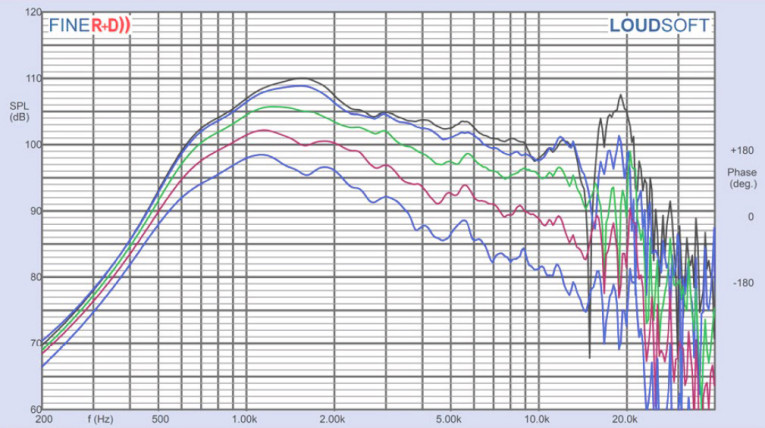
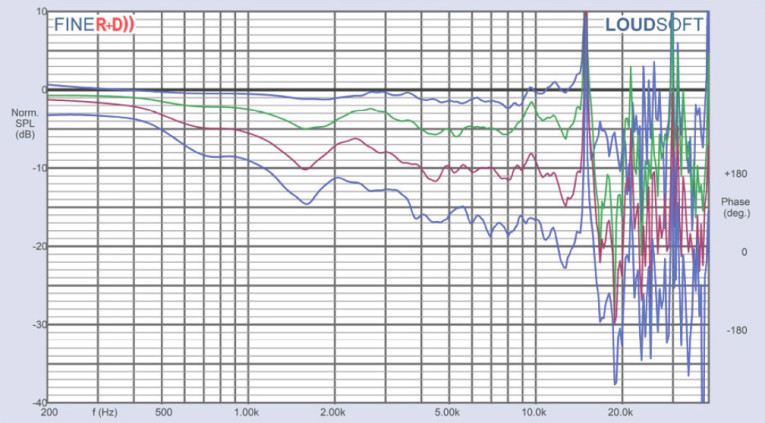

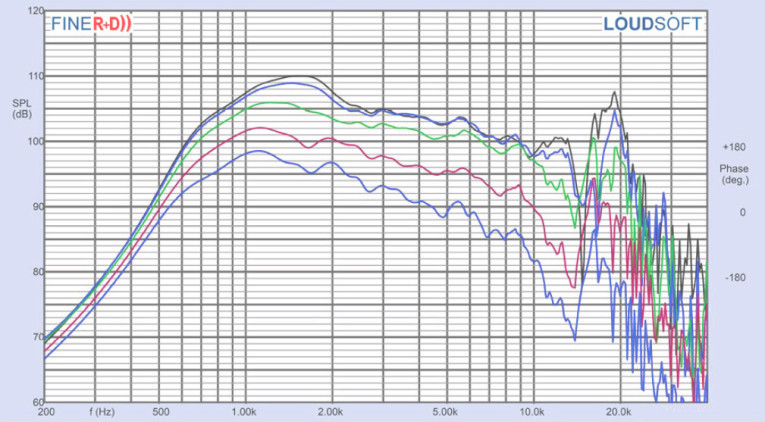


polar plot (in 10° increments).
For the next set of SPL measurements, I free-air mounted the Celestion CDX14-2420/ME90 combination without an enclosure and measured both the horizontal and the vertical on and off axis at 2 V/0.5 m (normalized to 2.83 V/1 m) from 0° on-axis to 60° off-axis using the Loudsoft FINE R+D analyzer and the GRAS 46BE microphone (supplied courtesy of Loudsoft and GRAS Sound & Vibration).
Figure 2 displays the on-axis frequency response of the compression driver/horn combination, which is relatively smooth with no major anomalies from the 1.2 kHz recommended crossover frequency to about 12 kHz, with the typical downward sloping response of a constant directivity horn. Figure 3 gives the factory measured plane wave tube frequency response along with an 80° × 60° horn measurement.
Figure 4 shows the 0° to 60° on- and off-axis response in the horizontal plane. Figure 5 displays the normalized horizontal plane response. Figure 6 shows the 180° horizontal polar plot (in 10° increments with 1/3 octave smoothing applied), generated by the CLIO Pocket analyzer and accompanying microphone (courtesy of Audiomatica SRL).
Figure 7 shows the on- and off-axis response in the vertical plane. Figure 8 depicts the normalized vertical plane response. Figure 9 shows the CLIO Pocket-generated 180° vertical plane polar plot (in 10° increments with 1/3 octave smoothing applied).


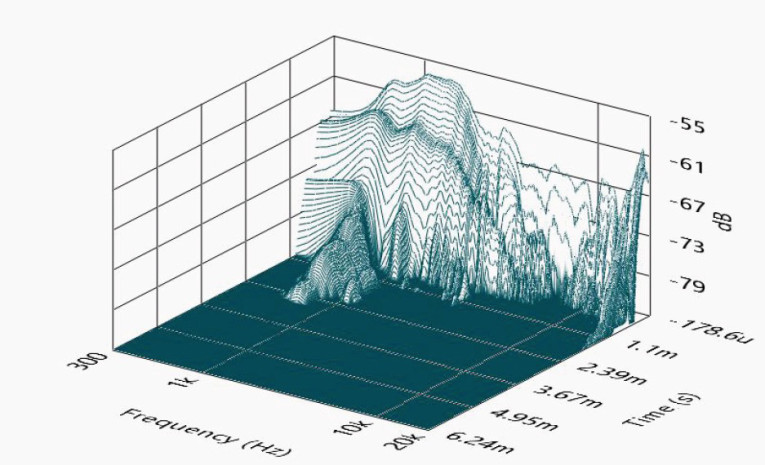

Last, Figure 10 illustrates the two-sample SPL comparison showing the two Celestion CDX14-2420 compression driver samples to be closely matched within 1 dB or less above the recommended crossover frequency of 1.2 kHz to above 12 kHz.
For the remaining series of tests, I set up the Listen, Inc., AudioConnect analyzer and 1/4” SCM microphone (provided to by Listen, Inc.) to measure distortion and generate time-frequency plots. For the distortion measurement, I mounted the Celestion CDX14-2420/ME90 combination in free-air (in the same manner as was used for the frequency response measurements) and set the SPL to 104 dB at 1m (1.99 V determined by using a pink noise stimulus generator and internal SLM in the SoundCheck 16 software). Then, I measured the distortion with the Listen microphone placed 10 cm from the mouth of the horn. This produced the distortion curves shown in Figure 11.
Following this test sequence, I then set up SoundCheck 16 to generate a 2.83 V/1 m impulse response curve for this driver/horn combination and imported the data into Listen’s SoundMap Time/Frequency software. Figure 12 shows the resulting cumulative spectral decay (CSD) waterfall plot. Figure 13 shows the short-time Fourier transform (STFT) plot.
Considering all the measurements taken together, the UK-manufactured Celestion neodymium CDX14-2420 is obviously a well-engineered 1.4” compression driver, exhibiting good performance, combined with Celestion’s usual excellent build quality. For more information, visit www.celestion.com. VC
This article was originally published in Voice Coil, December 2018.




